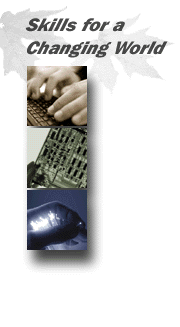
After completing IIS 4: Architecture and Components
the user should be able to:
 | Choose the appropriate technology or feature to resolve specific problems |
 | Choose an implementation strategy for an Internet or intranet site for stand-alone servers
single-domain environments
and multiple-domain environments |
 | Select between anonymous and user-specific access for a site and
if necessary
choose either basic authentication or Windows NT Challenge/Response security |
 | Explain how Windows NT server and IIS components interact |
|

Static Content Delivery Architecture
 | Internet Information Server architecture |
 | Architecture and components |
 | Establishing a connection |
 | Authenticating a client |
 | Processing of client requests |
Dynamic Content Delivery Architecture
 | Applications and architecture |
 | Putting it together |
FTP and HTTP Features
 | FTP features |
 | HTTP features |
Application Delivery and Database Access
 | Microsoft Transaction Server |
 | Microsoft Message Queue Server |
 | Database access features |
IIS System Administration
 | IIS administration architecture |
 | Windows NT administration tools |
 | Content manipulation features |
 | Performance management |
 | Logging support |
 | Fault tolerance |
Components and Implementation Strategies
 | Microsoft SMTP service |
 | Microsoft NNTP service |
 | Choosing an implementation strategy |
|

This course has the following features:
 | Exercises that allow users to practice in Internet Information Server 4.0 |
 | A file containing the text of the exercises |
 | Simulations that allow users to practice course skills
even if they don't have access to Internet Information Server 4.0 |
 | A glossary |
 | A Skill Assessment |
|

 | Previous courses in
or experience with
NT Server administration |
 | IIS 4: Internet Information Server Basics (IISC01) |
|

Microsoft® is a registered trademark of Microsoft Corporation.
|
